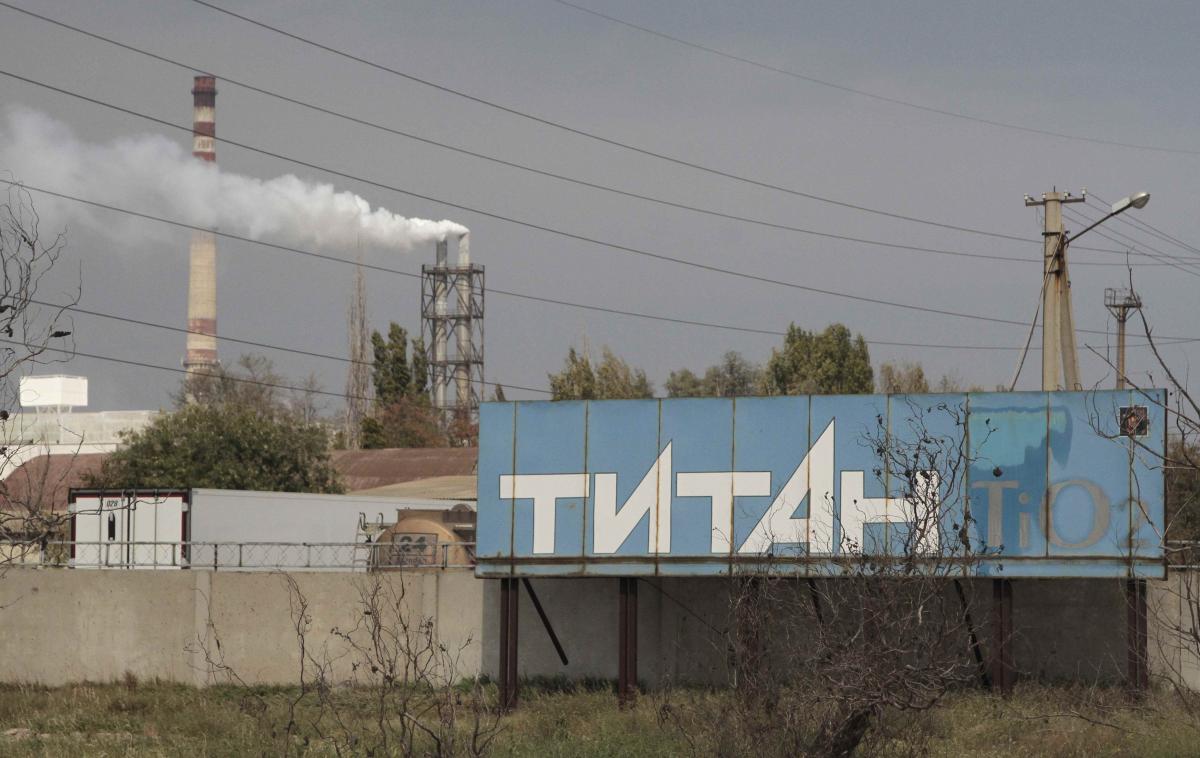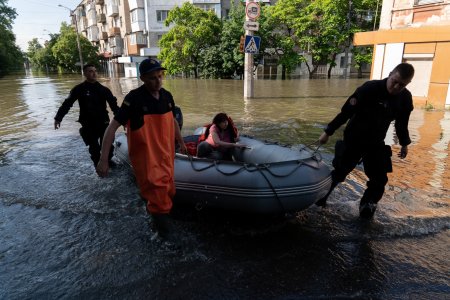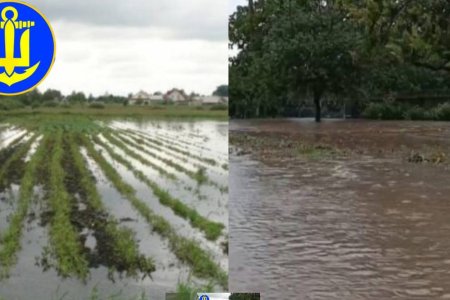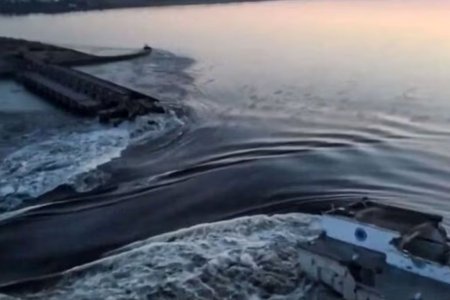
Ukraine’s Military Intelligence [HUR] reports that Russia is mining the workshops of the Crimean Titanium Factory in occupied Armyansk, risking a man-made disaster which one expert suggests could kill tens of thousands. It is increasingly difficult to believe that any number of deaths and level of environmental damage would stop such criminal behaviour, given the weight of evidence that Russia deliberately blew up the Kakhovka Dam on 6 June.
On 12 June, HUR reported that the Russians are preparing to evacuate both members of the occupation regime and the local population from Armiansk, in the north of occupied Crimea. The destruction of the Kakhovka Hydro-Electric Station and Dam has meant that water from the Dnipro via the Northern Crimea Canal, vital for Crimea, will not be available for the foreseeable future, with this causing “a critical level” of disruption to the production process at the factory. According to HUR, the occupation regime believe that the factory’s production cannot be reinstated, and rumours are circulating in Armiansk of the factory’s likely shutdown.
More worryingly, HUR reports that the Russian military have been planting mines in the factory’s workshops, as well as explosives on the territory of the factory. If this is true, then a catastrophe of unseen proportions could be unleashed. There were reports from October last year that the Russians were planting mines at the Kakhovka Hydro-Electric Station, and both seismic and satellite records from the early hours of 6 June certainly point to massive explosions occurring immediately before the dam was breached.
HUR warns that the factory’s refrigerators use around 200 tons of ammonia. An explosion would lead to an ammonia cloud covering the surrounding area within 30 minutes, and placing large parts of both Crimea and Kherson oblast in danger.
Ukrainian military expert Pavlo Narozhny believes that the Russians could indeed resort to such an act at the factory, and warns of “thousands, if not tens of thousands, of deaths” from the resulting ammonia cloud, not to mention the vast levels of sulphuric acid at the factory and other toxic substances. The destruction of the Kakhovka Dam, he said, has demonstrated that the Russians will stop at nothing to stop Ukraine’s advance,
It was clear from the beginning of Russia’s full-scale invasion that the civilian population was of no concern to the invading forces. Mariupol, Sievierodonetsk, Lysychansk and other cities in Donbas were virtually razed to the ground in order to seize control of them. Among the many factors which point to Russia’s deliberate destruction of the Kakhovka Dam on 6 June is the fact that the Russian armed forces are also destroying other dams, especially in Zaporizhzhia oblast, to try to impede Ukraine’s counter-offensive (details here and here). This placed thousands in life-threatening danger from the flooding, as well as leaving around 700 thousand people without drinking water, destroying agricultural land and causing massive environmental damage.
Russia has also continued shelling areas affected by the flooding, with this killing several civilians trying to evacuate or help others escape the disaster. This is while, in areas under its occupation, very little has been done to help the victims at all. Martin Griffiths, the UN’s Under Secretary-General for Humanitarian Affairs and Emergency Relief Coordinator, stated on 10 June that Russia had yet to allow access to areas under its occupation. Judging by previous occasions, such as the explosion at a Russian prison in occupied Olenivka that killed over 50 Ukrainian prisoners of war, it seems likely that Russia will simply not provide the kind of safety guarantees that would make such a UN mission possible.
Since its invasion of Crimea in 2014, Russia has used unacceptable demands which would effectively give recognition of Russia’s occupation as a pretext for keeping all independent human rights monitors and observers out. Like the Soviet Union, it uses clamps on the media, freedom of speech, etc. to conceal problems on occupied territory. In August and September 2018, the occupation authorities took two weeks to react to a dangerous chemical spillage at the Crimean Titanium Factory and at least evacuate children. On that occasion, there was no explosion, just a believed leak to an acid storage tank, yet it still led to the local population suffering problems with breathing, skin rashes, and damage to crops, etc. Local residents faced threats of prosecution and other forms of repression for speaking out about the effects of the leakage.



